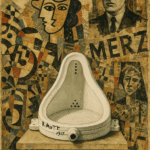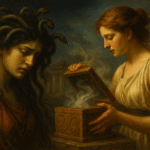In a world bursting with change, was the Renaissance a staggering revolution or a gentle awakening? This transformative era, commonly acknowledged as the bridge to modernity, invites us to delve into its profound impact on art, science, and our contemporary identity. While some argue it was a colossal upheaval, others perceive it as humanity’s subtle reawakening to beauty and knowledge. Join me as we dissect this compelling duality, exploring the essence of the Renaissance and its enduring legacy.
Understanding the Renaissance
A Brief Overview
The term “Renaissance,” from the French word for “rebirth,” defines a period conventionally situated between the 14th and 17th centuries. Originating in Italy, this era marked a departure from the Middle Ages, setting the stage for the modern world. It began in the city-states of Italy, notably Florence, where a surge in both cultural and scientific endeavors unfolded. The Renaissance was characterized by a rekindled interest in the classical knowledge of Ancient Greece and Rome, serving as a catalyst for monumental progress in a myriad of domains.
Key Characteristics
Central to the Renaissance was artistic innovation. Artists of this period experimented with realism, striving to depict the human form and nature with unprecedented accuracy. They achieved this through newfound techniques such as linear perspective and chiaroscuro, offering depth and volume to their work. Concurrently, the concept of humanism gained prominence—a philosophical outlook prioritizing human potential and achievements. This perspective shifted focus from the divine and otherworldly to the human experience, transforming the way knowledge was perceived and celebrated.
Revolution vs. Awakening: The Heart of the Debate
What Constitutes a Revolution?
By definition, a revolution signifies a profound change in political structures, thoughts, or societal norms. During the Renaissance, Europe experienced significant transformations that met this criterion. The shift from a feudal system to more centralized forms of governance, coupled with the decline of the Church’s absolute authority, underpinned societal evolution. The Renaissance was marked by events like the fall of Constantinople in 1453 and the rise of the Protestant Reformation, which challenged ecclesiastical domination and encouraged new ideologies.
An Awakening Perspective
Conversely, the Renaissance is often viewed as an awakening—a gradual unearthing of ancient wisdom. It was a renaissance or reawakening of classical thought and artistic ideals long overshadowed. Renaissance scholars and philosophers fervently explored ancient texts, leading to a revival of philosophies that cultivated intellectual curiosity. The era’s literature and arts mirrored the rediscovery of Greco-Roman principles that propelled forward-thinking and cultural rejuvenation.
Renaissance Art: A Reflection of Society
Art as a Reflection of Society
Renaissance art mirrored the era’s societal metamorphosis, articulating changes in cultural and philosophical outlooks. Art became a medium through which intellectual and ideological shifts were expressed. The works of Leonardo da Vinci, Michelangelo, and Raphael are testaments to this transformation. Da Vinci’s anatomical studies and iconic “Mona Lisa,” Michelangelo’s breathtaking Sistine Chapel ceiling, and Raphael’s intricate frescoes collectively encapsulated the Renaissance spirit, bridging art with newfound scientific understanding.
Innovations in Artistic Techniques
The Renaissance heralded groundbreaking artistic techniques. The introduction of linear perspective enabled artists to create the illusion of depth, allowing two-dimensional artworks to acquire spatial realism. Meanwhile, chiaroscuro employed the contrast between light and dark to enhance the illusion of volume. Realism prospered through meticulous observation of both nature and the human body, culminating in works that breathed life and dynamism into previously flat depictions.
Scientific Advancements during the Renaissance
Breaking Boundaries in Science
The Renaissance signaled a paradigm shift in scientific thought. Moving away from superstition, scholars and thinkers began to ground their understanding of the world in empirical evidence. Figures such as Galileo Galilei and Nicolaus Copernicus revolutionized our perception of the cosmos through their work on heliocentrism and celestial mechanics. The subsequent questioning and testing of accepted truths laid the foundation for the scientific method, empowering future generations of scientists to explore beyond the known boundaries.
A Recipe for Modern Identity
The scientific advancements of the Renaissance forged the underpinnings of modern science. These changes inspired a culture of inquiry that influences today’s scientific community, fostering a worldview that prizes evidence over dogma. The era’s legacy continues to resonate, evident in contemporary reliance on empirical research to interpret and interact with an ever-evolving universe.
Cultural Impact of the Renaissance
Literature and Philosophy
Literature and philosophy blossomed during the Renaissance, with works like Niccolò Machiavelli’s “The Prince” reshaping political thought. This intellectual revival prompted a resurgence of philosophical debates, encouraging scrutiny and reformulation of ideas concerning governance, ethics, and human nature. The era produced a pantheon of thinkers whose writings continue to challenge and inspire modern-day discourse.
Architectural Innovations
Architecture during the Renaissance witnessed a revival of Classical styles. Innovations like the use of symmetry, proportion, and geometry transformed cityscapes, notably exemplified by structures such as St. Peter’s Basilica and the Florence Cathedral. Renaissance architecture not only beautified the urban landscape but also embodied the philosophical ideals of balance and harmony that defined the period.
Technological Advances: A Catalyst for Change
The Printing Press and Its Effects
The invention of the printing press by Johannes Gutenberg in the mid-15th century revolutionized information dissemination. It democratized knowledge, making books more affordable and accessible, thereby fueling the Renaissance’s intellectual fervor. The introduction of the printed word reinforced the era’s ideas, allowing them to spread across Europe and catalyzing cultural and scientific dialogue.
Scientific Instruments
The refinement and development of scientific instruments, such as the telescope, redefined the understanding of the universe. These tools enabled not only the discovery of new celestial bodies but also enhanced the accuracy of astronomical observations. By offering a closer view of the cosmos, they fueled human curiosity and reshaped our conception of the known world.
Philosophical Shifts: Humanism Takes Center Stage
What is Humanism?
Humanism emerged as a defining ideology of the Renaissance. It emphasized the value and agency of human beings, individually and collectively. The movement’s founders, including figures like Petrarch and Erasmus, advocated for the education and enrichment of the human spirit through the study of humanities. This philosophical shift profoundly influenced Western thought, encouraging a departure from scholasticism and promoting a more secular worldview.
The Impact of Humanism on Modern Identity
Humanism’s influence pervades modern thought, evident in trends toward secularism and personal autonomy. Its emphasis on critical thinking and ethical reflection continues to inform contemporary ethics and morals. The movement’s legacy endures in today’s educational systems, which prioritize the cultivation of well-rounded, educated citizens prepared to navigate complex social landscapes.
The Legacy of the Renaissance
Art and Culture
Renaissance ideals continue to inspire modern art, with contemporary artists drawing on its techniques and themes. The spirit of innovation and exploration established during this period remains a cornerstone of creative expression. Exhibits and retrospectives worldwide often highlight the lasting influence of Renaissance art, showcasing its enduring relevance and appeal.
Science and Progress
The epochal advancements during the Renaissance have left a lasting imprint on modern scientific discourse. Today, we celebrate the pioneers of the Renaissance for their courage to challenge the norms and for laying the groundwork for progress. Their contributions underpin our current understanding of science and the investigative endeavor, reaffirming the spirit of inquiry that propels us forward.
Your Thoughts: Revolution or Awakening?
Was the Renaissance a revolution, an awakening, or perhaps both? This transformative period presents a compelling narrative that invites diverse interpretations. I encourage you to share your thoughts and insights on this perennial debate. Have the chance to engage with others who find fascination in this celebrated cultural rebirth.
FAQ
What sparked the Renaissance?
The Renaissance was sparked by a confluence of factors, including the decline of feudalism, the rise of trade and prosperous city-states in Italy, and the rediscovery of classical texts. This period of socio-economic and cultural change fostered an environment ripe for the rebirth of arts and sciences.
How did the Renaissance influence Europe?
The Renaissance had profound socio-political impacts across Europe, leading to shifts in governance, culture, and thought. It set the stage for the Enlightenment and paved the way for revolutions in France, America, and beyond, laying the foundation for modern democratic ideals.
Who were the key figures of the Renaissance?
Key figures include Leonardo da Vinci, Michelangelo, and Galileo, among others. These individuals made impactful contributions across various disciplines—be it art, science, or philosophy—shaping the course of Western history.
Where can I find authentic Renaissance art?
To view authentic Renaissance art, visit celebrated museums like the Uffizi Gallery in Florence, the Louvre in Paris, and the Vatican Museums in Rome. Online galleries and virtual museum tours offer additional avenues for exploration.
Why does the Renaissance matter today?
The Renaissance matters today due to its lasting impact on various facets of modern culture and education. Its emphasis on humanism, scientific inquiry, and artistic exploration continues to influence contemporary thought and creative endeavors.

